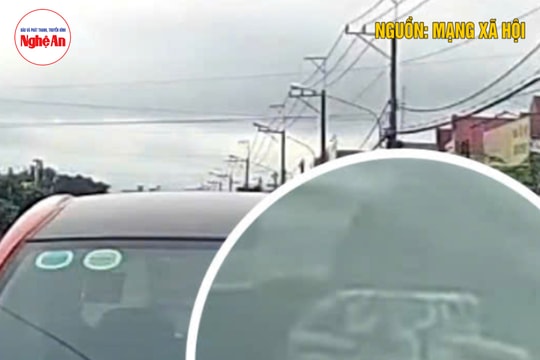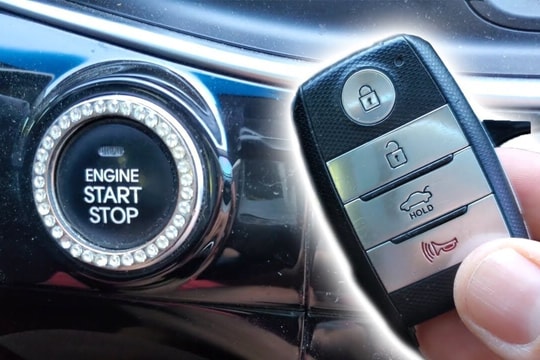5 safety principles when turning a car on a narrow road
(Baonghean.vn) - Turning a car around on a small alley, a village road, or on a dike that doesn't allow enough space to turn the steering wheel all the way around is not a simple task, whether for a "young" or "old" driver... Below are safety principles that drivers need to know by heart to apply when having to turn around on a narrow road.
1. Stay away from the accelerator
 |
Turning around on a narrow road is not a fast way to go, so forget about using the accelerator to move quickly. Just a little too hard on the accelerator can cause you to crash into a motorbike trying to swerve, or fly into a wall, or even back into the river if you are on a dike.
The rule is to only use the brake and clutch (if the car is manual) to adjust the speed when going forward or backward to turn the car. Slowly release the brake to feel the movement and observe the surroundings. Drive slowly and always have your foot on the brake ready to stop the car.
2.The front of the car always has priority.
 |
On a narrow road, you must use at least one "red" (one forward-backward) to successfully turn around. A rule when having to back up or forward is in places with low visibility, the most risky terrain is to put the head in, not the tail back.
For example, when turning on a mountain pass with a cliff on one side and a cliff on the other, use full steering and move the front of the car closer to the cliff because that is where the driver can easily observe and actively adjust. Do not move the rear of the car to the edge of the cliff, just one mistake can cost you dearly.
3. Look over your shoulder
 |
Looking over your shoulder is the way to observe blind spots. Rearview mirrors and turning your head to the sides are not enough. When turning your head on the street in crowded roads, the driver's eyes have to work continuously. To eliminate the blind spots on both sides of the car, the driver must turn his head, but the principle is to turn his head over his shoulder, not his whole body.
When turning, the whole body, arms and legs are twisted, which can cause the steering wheel to veer to another direction or the brake or accelerator pedal to slip, causing an accident.
4.Shift gears before steering
 |
After reversing, the driver brakes and turns the steering wheel but forgets to shift gears to continue driving. This may be the reason why the car rolls down... Therefore, according to experienced car experts, remember to stop the car after moving forward/reversing, shift gears and then steer to continue driving.
5. Open the crab accurately
 |
The process of maneuvering effectively depends on the driver's ability to turn the corner (turn the steering wheel) accurately, both when reversing and when moving forward. This technique depends quite a lot on the size of the car, so the driver must feel and evaluate the space around the car.
To acquire the above skills, drivers must spend time practicing and accumulating experience.







.jpg)
